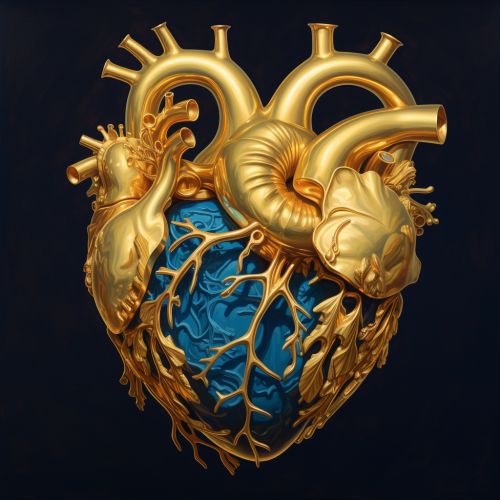Valvular heart disease
Overview
Valvular heart disease is a condition characterized by damage to or a defect in one of the four heart valves: the mitral, aortic, tricuspid or pulmonary. The heart valves work by ensuring that blood flows in the right direction through the heart's four chambers. In valvular heart disease, the valves become too narrow and hardened (stenotic) to fully open, or they are unable to close completely (insufficiency or regurgitation). This can affect the flow of blood through the heart.


Types of Valvular Heart Disease
There are several types of valvular heart disease, which can involve one or more of the valves:
Mitral Valve Prolapse
In mitral valve prolapse, the leaflets of the mitral valve bulge (prolapse) into the left atrium like a parachute during the heart's contraction. This can lead to blood leaking backwards into the left atrium, a condition known as mitral regurgitation.
Mitral Valve Stenosis
Mitral valve stenosis occurs when the mitral valve becomes narrow or obstructed. This can lead to a reduction in blood flow through the valve.
Aortic Stenosis
Aortic stenosis is a condition where the aortic valve narrows, restricting blood flow from the left ventricle to the aorta and potentially leading to left ventricular hypertrophy.
Aortic Regurgitation
In aortic regurgitation, the aortic valve doesn't close properly, causing blood to flow back into the left ventricle.
Tricuspid Stenosis and Regurgitation
Tricuspid stenosis is a rare valvular heart disease in which the tricuspid valve becomes narrow, reducing the amount of blood that can flow from the right atrium to the right ventricle. Tricuspid regurgitation is a condition where the tricuspid valve doesn't close properly, causing blood to flow back into the right atrium.
Pulmonary Stenosis and Regurgitation
Pulmonary stenosis is a condition where the pulmonary valve is too narrow, which can lead to reduced blood flow from the right ventricle to the pulmonary artery. Pulmonary regurgitation is when the pulmonary valve doesn't close all the way, allowing some blood to flow back into the right ventricle.
Causes
Valvular heart disease can be caused by a variety of factors, including age-related changes, infections and heart attacks. Congenital heart disease, which is present at birth, can also cause valvular heart disease.
Symptoms
The symptoms of valvular heart disease can vary depending on which valve is affected and the severity of the condition. Some people may have no symptoms, while others may experience fatigue, shortness of breath, irregular heartbeat, swollen feet or ankles, chest pain, fainting, or sudden weight gain.
Diagnosis
Valvular heart disease can be diagnosed using a variety of tests, including echocardiography, cardiac catheterization, chest X-ray, electrocardiogram (ECG), and magnetic resonance imaging (MRI).
Treatment
Treatment for valvular heart disease can include medication, lifestyle changes, and in some cases, surgery. The type of treatment will depend on the severity of the disease and the patient's overall health.
